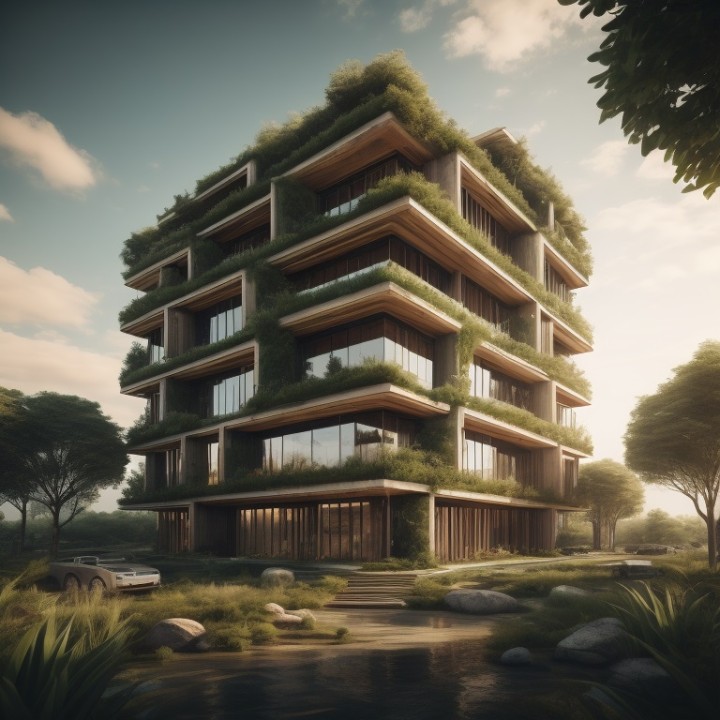
Green Buildings and Sustainable Architecture: Building the Future with Eco-Friendly Design
As our planet faces increasing environmental challenges, the architecture and construction industry must play a critical role in reducing carbon emissions and conserving natural resources. Green buildings and sustainable architecture can help us address these challenges and build the future we want. By incorporating energy-efficient designs, sustainable building materials, and green building certifications like LEED, we can create buildings that promote eco-friendliness and reduce the impact on the environment.
What is sustainable architecture?
Sustainable architecture is an approach to building design that aims to minimize the negative environmental impact of a building by reducing energy consumption, conserving water, and minimizing waste. Sustainable buildings are designed to function in harmony with the environment, using natural ventilation, daylighting, and other passive design strategies to reduce energy use. Sustainable design also includes the use of environmentally friendly building materials, such as recycled content, low-VOC paints, and sustainably sourced wood.
Energy-efficient technologies
Energy-efficient technologies can be incorporated into green building designs to reduce energy consumption and greenhouse gas emissions. These technologies range from simple strategies like improving insulation and air sealing to more complex systems such as solar photovoltaic panels and geothermal heating and cooling. Other sustainable technologies include rainwater harvesting and graywater recycling, which can reduce water consumption, and green roofs, which can help absorb rainwater and provide natural insulation.
LEED Certification
LEED, or Leadership in Energy and Environmental Design, is a green building certification program that recognizes buildings that meet high standards of sustainability. LEED certification is based on a points system, with points awarded for features such as energy efficiency, water conservation, and use of sustainable materials. Buildings can earn different levels of certification, ranging from Certified to Platinum. LEED certification is recognized globally as a symbol of sustainable design excellence, and many cities and organizations require LEED certification for new buildings.
Benefits of green buildings
The benefits of green buildings are numerous, including reduced operating costs, improved indoor air quality, and lower greenhouse gas emissions. Green buildings are also more resilient to climate change and natural disasters, such as floods and wildfires. Sustainable design can also improve the health and well-being of building occupants, with features such as natural daylighting and proper ventilation. Finally, green buildings can contribute to the health of the surrounding environment by conserving natural resources and reducing waste.
Final Thoughts
Green buildings and sustainable architecture are not only crucial for a healthier planet but also for creating a more environmentally and economically sustainable society. Architects, builders, and designers must prioritize eco-friendliness in their designs to ensure we build for the future we want. By incorporating energy-efficient technologies, sustainable building materials, and pursuing green building certifications like LEED, we can promote sustainable practices and create a better tomorrow. Let us work together towards reducing our carbon footprint and building a more resilient and sustainable future.